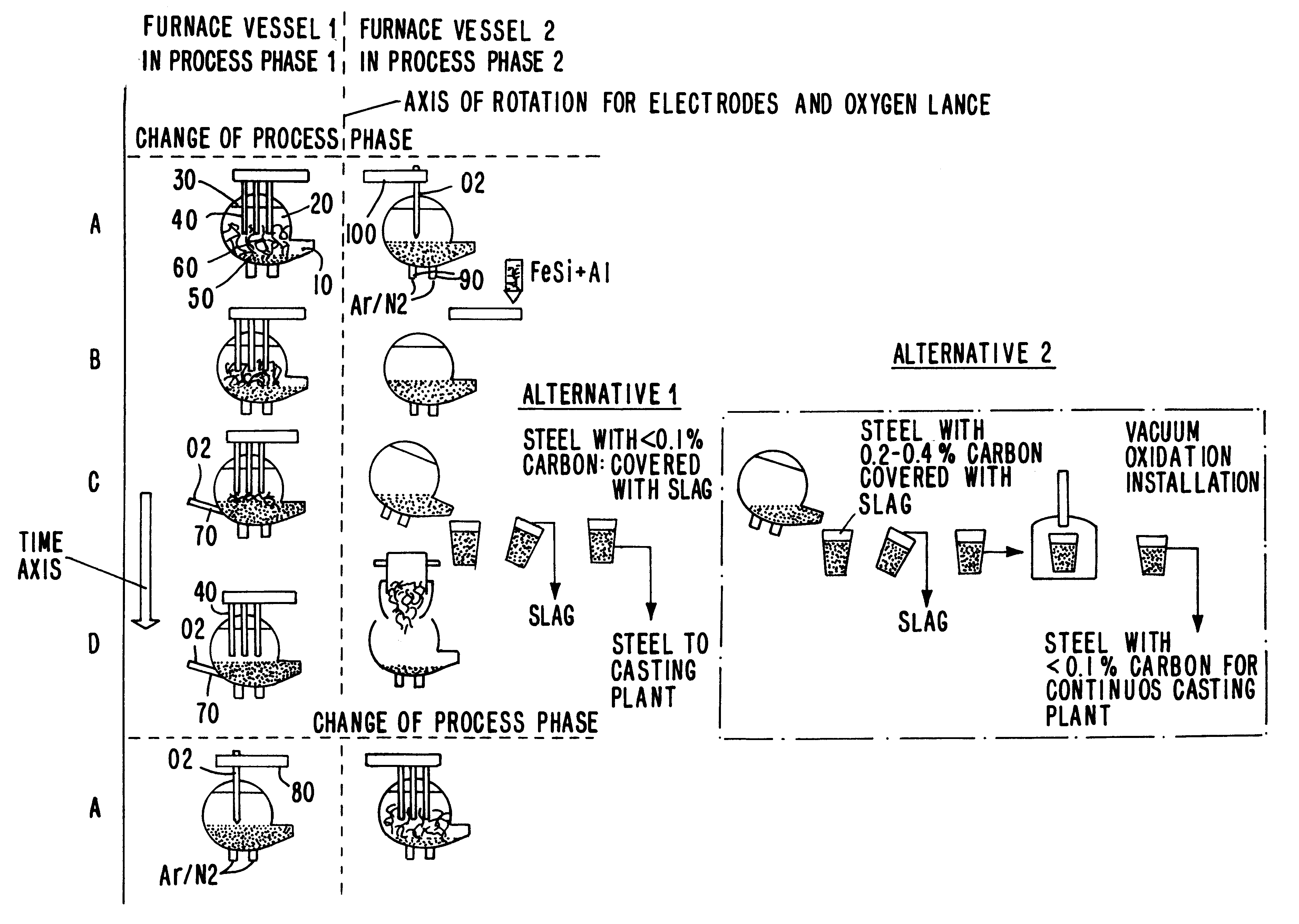Producing stainless steels in parallel operated vessels
a technology of parallel operation and production of stainless steel, which is applied in the direction of furnaces, electric furnaces, furnace types, etc., can solve the problems of increased electrode and refractory wear in the electric furnace, high temperature loss, and high energy consumption in the primary melting vessel
- Summary
- Abstract
- Description
- Claims
- Application Information
AI Technical Summary
Benefits of technology
Problems solved by technology
Method used
Image
Examples
Embodiment Construction
First, considering process phase 1, when furnace vessel 1 is at step A, there is a small liquid pool 50 in the furnace vessel 1 on which a newly poured charge 60 is located. The furnace vessel 1 is closed by means of a cover 30 through which electrodes 40 project into the upper vessel 20 of the furnace 1. In step B, the charge 60 is melted by electrical energy provided by the electrodes 40. In so doing, the liquid bath level 50 rises in the lower vessel 10 of the furnace 1. In step C, the charge 60 comprising essentially scrap, ferronickel, nickel, ferrochromium and other iron-containing metallic materials, is melted virtually completely to liquid base metal 50. When using high carbon-containing and / or high silicon-containing alloying means, oxygen can be blown in by means of a first lance 70, so that the silicon content is reduced.
In step D, the base material is completely melted, and the melt has a temperature of 1500.degree. C. to 1600.degree. C. In vessel 1, the electrode device...
PUM
| Property | Measurement | Unit |
|---|---|---|
| temperature | aaaaa | aaaaa |
| temperature | aaaaa | aaaaa |
| temperature | aaaaa | aaaaa |
Abstract
Description
Claims
Application Information
 Login to View More
Login to View More - R&D
- Intellectual Property
- Life Sciences
- Materials
- Tech Scout
- Unparalleled Data Quality
- Higher Quality Content
- 60% Fewer Hallucinations
Browse by: Latest US Patents, China's latest patents, Technical Efficacy Thesaurus, Application Domain, Technology Topic, Popular Technical Reports.
© 2025 PatSnap. All rights reserved.Legal|Privacy policy|Modern Slavery Act Transparency Statement|Sitemap|About US| Contact US: help@patsnap.com


